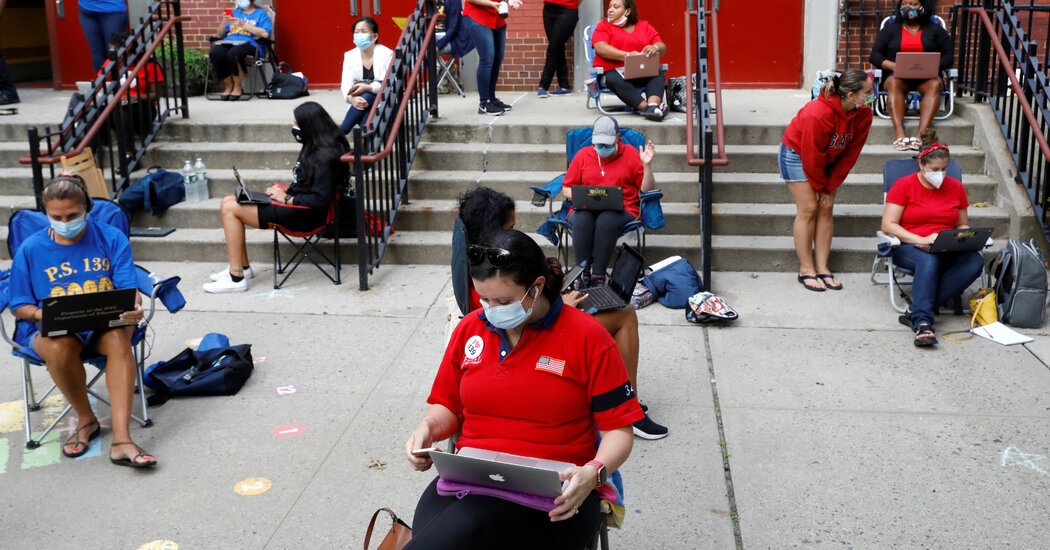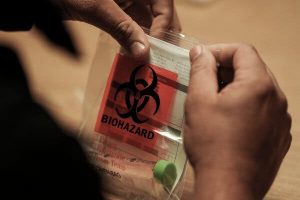This summer, I participated in two back-to-back phone calls about resuming some semblance of normal life in New York City — which for me means resuming work on a television show and sending my 9-year-old son, Max, back to school.
The differences in these phone calls could not have been starker, and taught me a great deal about in whom and what we invest in the era of Covid-19.
On the call related to my show, I heard about the many tours the industrial hygienist had taken of the set and about the renovation of some of our work spaces to be Covid-safe. Out of an abundance of caution, even some spaces that looked fairly healthy had been eliminated.
I also heard about how the crew and production staff would be divided into strict pods; they would be tested before they started work and then tested one to three times a week. Actors, who need to remove their masks, would be tested every day. Anyone coming to New York from out of state would need to quarantine for two weeks before being allowed on set.
Air purifiers have been purchased, filtration systems have been upgraded, and an entire department has been created solely to deal with safety protocols and testing. And Covid-upgraded vans and shuttles, along with extra parking lots, were available to ensure that everyone had safe transport to work.
The second call was a meeting of the parents association at my son’s public school. I heard that teachers and administrators could choose to be tested for Covid before the school year began, and that people entering the school could decide whether they wanted their temperature taken.
I heard about classroom pods limited to nine students, a restriction made irrelevant by the number of people moving freely from pod to pod — teachers, school staff and even parents who are now being recruited as substitute teachers by overwhelmed school administrators. I heard about the several hundred school nurses who still needed to be hired in the system.
I heard building inspections would begin just a few weeks before school was set to open, even though out of the 1,700 buildings to be examined, a thousand of them already have documented ventilation problems. And I could only shake my head as I later saw that the system for testing these ventilation systems involves using a yardstick with a piece of toilet paper attached to it by paper clip to gauge airflow.
Needless to say, the care and investment given to restarting television and film production in New York looks nothing like the uncertain, chaotic, shamefully underfunded and profoundly unsafe approach to reopening the public schools, which serve 1.1 million children, nearly three-quarters of them deeply underprivileged.
This pandemic has laid bare our society’s inequities, and nowhere more than in our public schools. Gov. Andrew Cuomo, lauded as a hero for his handling of the state’s pandemic response, has overseen a supposedly temporary 20 percent reduction of its payments to school districts since this summer.
In New York City, the decrease would amount to a $2.3 billion loss for the schools over the next year. The city schools chancellor, Richard Carranza, said that the cuts, if made permanent, would mean “game over” for in-person learning, and would lead to programming cuts and 9,000 layoffs in the Department of Education.
Yet the governor has resisted raising taxes on the state’s 118 billionaires (up from 112 last year), who have seen their collective wealth increase by $77 billion during the pandemic, a figure that dwarfs the state’s projected budget gap of $14.5 billion this year.
Even before the pandemic, New York State was second in the country when it comes to inequities in education funding — with rich districts getting $10,000 more per student on average than poor districts. (The state’s failure to equitably and fully fund New York’s low-income school districts motivated me to run for governor in 2018.)
The city has compounded the continuing disinvestment in our public schools. This June, Mayor Bill de Blasio and the City Council pushed through nearly a billion dollars in cuts and savings to the education budget. Coupled with the state reductions, the schools are now facing a staggering cut of $3.3 billion.
The mayor has been hamstrung by the governor and his own political miscalculations and leadership failures. As experts warned of a pandemic earlier this year, the mayor, echoing Mr. Cuomo’s confidence that the virus could be contained, resisted calls to close the schools.
By early May, at least 74 Department of Education employees had died in connection with Covid. (Researchers at Columbia found that had the city shut down even a week earlier than March 16, the date when schools were finally closed, some 18,500 Covid deaths citywide could have been avoided.)
Over the summer, as schools in Los Angeles and Chicago decided to go fully remote this fall, giving them crucial weeks to prepare for remote learning and make accommodations for the neediest students, our mayor at first stubbornly refused the pleas of parents and teachers and pushed for reopening in person without delay.
The mayor, whom I endorsed in 2013, has insisted correctly that schools are vital for the city’s most vulnerable families. His desire to reopen on time, however, has not been backed up with adequate safety measures.
It is noteworthy that a survey last month by the Education Trust-New York, found that Black, Latino and low-income families — many of whom have already been disproportionately hit by the virus — were significantly more wary of reopening schools this fall. Only when threatened with a strike by teachers (who were largely demanding many basic safety measures) did the mayor finally agree to delay opening, albeit by less than two weeks. As a result, all city public school students are now without schooling, remote or in person, for most of this month.
Instead of asking our wealthiest citizens to pay more during a time of crisis, New York is imposing austerity on public schools — even though fewer dollars mean fewer safety measures, more cases and more deaths.
If city and state leaders cared half as much about our children as they do about television actors, we’d be raising revenue and giving our schools the funding needed to reopen safely. The attention being devoted to keeping the city’s movie sets safe shows that it’s possible. Don’t our students and teachers deserve the same level of care and investment?
Cynthia Nixon is an actor and advocate.
The Times is committed to publishing a diversity of letters to the editor. We’d like to hear what you think about this or any of our articles. Here are some tips. And here’s our email: [email protected].
Follow The New York Times Opinion section on Facebook, Twitter (@NYTopinion) and Instagram.



















